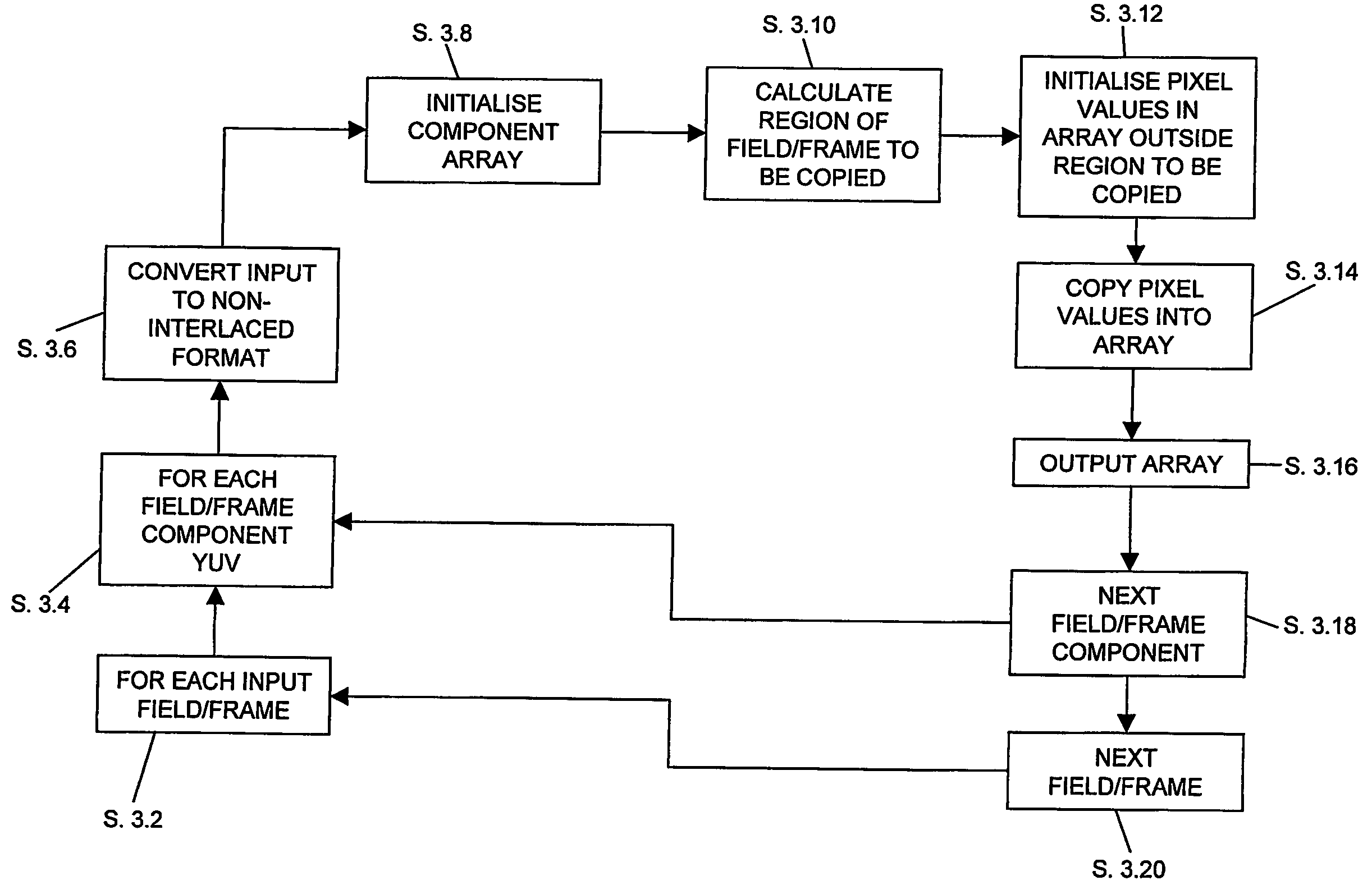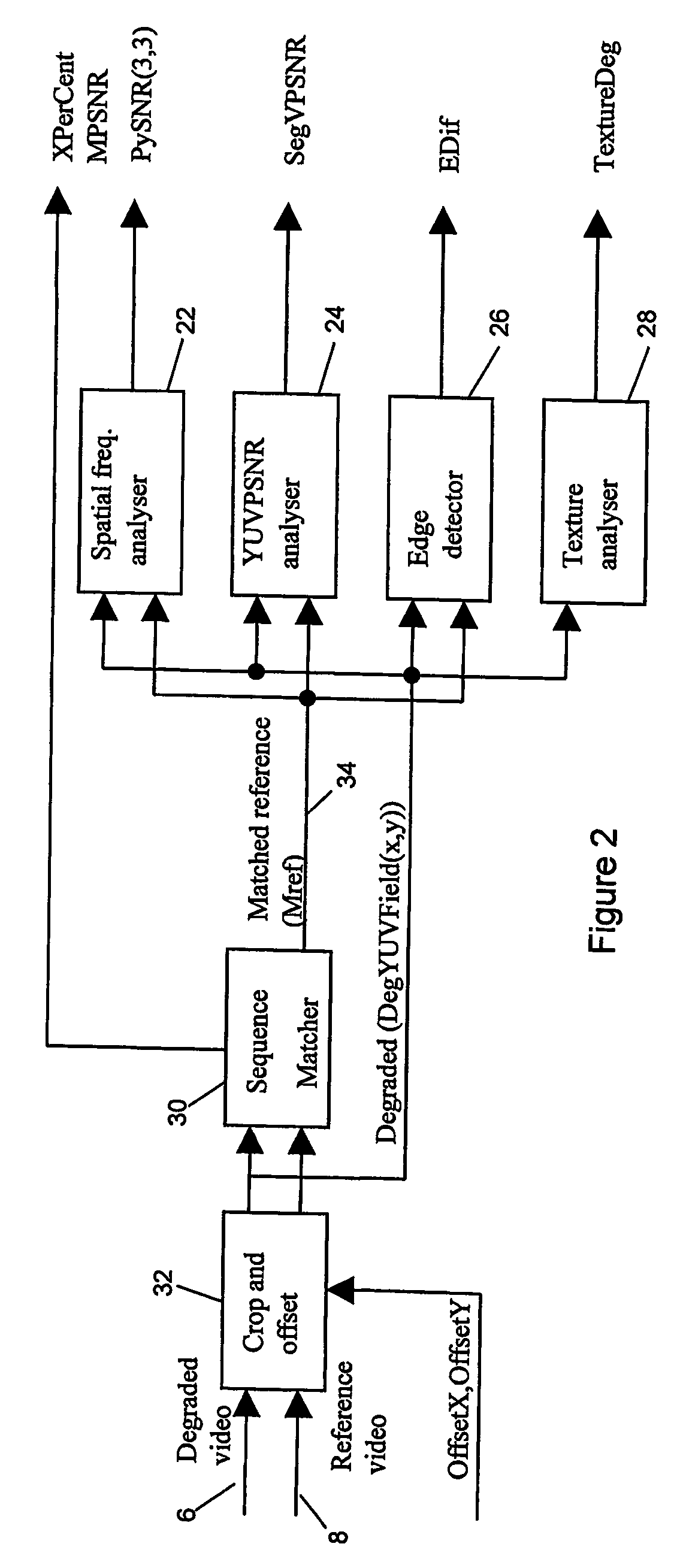Method and system for video quality assessment
a video quality and video technology, applied in the field of video quality assessment, can solve problems such as production line testing, complex subjective testing, time-consuming, etc., and achieve the effect of improving video quality
- Summary
- Abstract
- Description
- Claims
- Application Information
AI Technical Summary
Benefits of technology
Problems solved by technology
Method used
Image
Examples
Embodiment Construction
[0052] Embodiments of the present invention will now be described.
[0053]FIG. 1 illustrates an overall system block diagram of the general arrangement of the embodiments of the invention. Within FIG. 1 a reference sequence comprising reference sequence fields / frames is input to a detector module 2. Similarly, a test sequence of video fields / frames 8 (interchangeably referred to herein as either the test sequence, or the degraded sequence) is also input in to the detector module 2. The test sequence is obtained by inputting the reference sequence to a system to be tested (such as a video recording device, a broadcast system, or a video codec, for example), and then taking the output of the system under test as the test sequence. The detector module 2 acts to detect various video characteristics of the input reference and test video fields / frames and generates video characteristic values which are then output to an integration module 4. The integration module 4 integrates the video ch...
PUM
 Login to View More
Login to View More Abstract
Description
Claims
Application Information
 Login to View More
Login to View More - R&D
- Intellectual Property
- Life Sciences
- Materials
- Tech Scout
- Unparalleled Data Quality
- Higher Quality Content
- 60% Fewer Hallucinations
Browse by: Latest US Patents, China's latest patents, Technical Efficacy Thesaurus, Application Domain, Technology Topic, Popular Technical Reports.
© 2025 PatSnap. All rights reserved.Legal|Privacy policy|Modern Slavery Act Transparency Statement|Sitemap|About US| Contact US: help@patsnap.com



